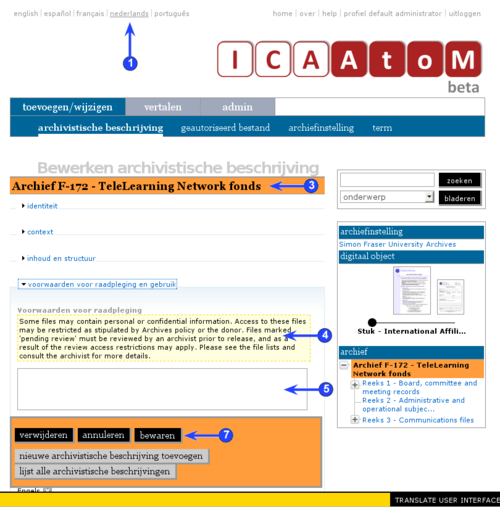Difference between revisions of "Translate content"
| Line 3: | Line 3: | ||
[[Main Page]] > [[User manual|(UM) User manual]] > [[UM-5|UM-5 Translate content / interface]] > UM-5.2 Translate descriptions | [[Main Page]] > [[User manual|(UM) User manual]] > [[UM-5|UM-5 Translate content / interface]] > UM-5.2 Translate descriptions | ||
| − | [[Image:um5- | + | [[Image:um5-2Descriptions.png|500px|right|thumb|Translate a description (Dutch)]] |
| − | |||
| − | |||
Revision as of 15:22, 3 July 2008
Please note that ICA-AtoM is no longer actively supported by Artefactual Systems.
Visit https://www.accesstomemory.org for information about AtoM, the currently supported version.
Translate descriptions
Main Page > (UM) User manual > UM-5 Translate content / interface > UM-5.2 Translate descriptions
To translate a description, work through the record (archival description, authority record, or archival institution) field by field and ensure that all fields that were entered in the original are translated.
1. In the Language menu click the language into which you want to translate.
2. Navigate to the description you want to translate. In view mode any fields that have already been translated will appear in the language of translation; any fields not translated will appear in the default source language of the application. Empty fields (no data entered in the original) do not appear in view mode.
3. Click the Title bar or Edit button to switch to edit mode.
4. Open one of the areas of description to access fields and begin translating. For each field, the original source text is highlighted and appears above the data entry field.
5. Enter the translation in the data entry field.
6. Repeat for each field as required.
7. Click the Save button.
8. ICA-AtoM returns you to view mode. The translated fields will now appear in the language of translation. Any fields not yet translated will continue to appear in the application's default source language.
